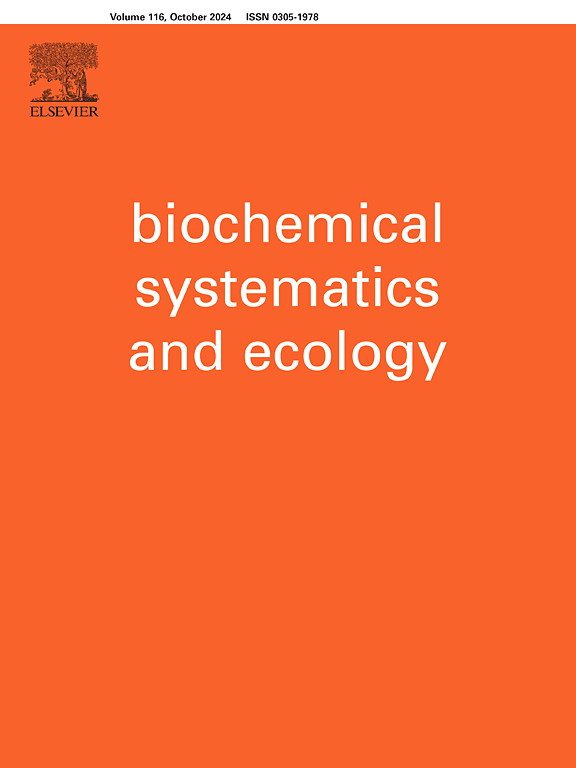Chemical constituents of Euphorbia lathyris and their chemotaxonomic significance
IF 1.4
4区 生物学
Q4 BIOCHEMISTRY & MOLECULAR BIOLOGY
引用次数: 0
Abstract
A comprehensive analysis of the chemical constituents of the traditional Chinese herb Euphorbia lathyris yielded the isolation and characterization of a novel lathyrane diterpene (1), six previously identified lathyrane diterpenes (2−7), two triterpenes (8−9), three sterols (10−12), and one sesquiterpene (13). The molecular structures of these constituents were elucidated through the application of an extensive array of spectroscopic methods, and the absolute configuration of the new diterpene 1 was ascertained using time-dependent density functional theory (TDDFT) calculations. Notably, compounds 1−4 and 11−12 are being reported for the first time within the Euphorbia genus. Furthermore, the study also delves into the chemotaxonomic implications of these newly isolated compounds.
大戟的化学成分及其化学分类意义
通过对中草药大戟(Euphorbia lathyris)化学成分的综合分析,分离并鉴定了一种新型lathyrane二萜(1)、六种先前鉴定的lathyrane二萜(2−7)、两种三萜(8−9)、三种甾醇(10−12)和一种倍半萜(13)。这些成分的分子结构是通过广泛的光谱方法来阐明的,新的二萜1的绝对构型是通过时间依赖密度泛函理论(TDDFT)计算确定的。值得注意的是,化合物1−4和11−12为首次在大戟属植物中报道。此外,本研究还深入探讨了这些新分离化合物的化学分类意义。
本文章由计算机程序翻译,如有差异,请以英文原文为准。
求助全文
约1分钟内获得全文
求助全文
来源期刊

Biochemical Systematics and Ecology
生物-进化生物学
CiteScore
3.00
自引率
12.50%
发文量
147
审稿时长
43 days
期刊介绍:
Biochemical Systematics and Ecology is devoted to the publication of original papers and reviews, both submitted and invited, in two subject areas: I) the application of biochemistry to problems relating to systematic biology of organisms (biochemical systematics); II) the role of biochemistry in interactions between organisms or between an organism and its environment (biochemical ecology).
In the Biochemical Systematics subject area, comparative studies of the distribution of (secondary) metabolites within a wider taxon (e.g. genus or family) are welcome. Comparative studies, encompassing multiple accessions of each of the taxa within their distribution are particularly encouraged. Welcome are also studies combining classical chemosystematic studies (such as comparative HPLC-MS or GC-MS investigations) with (macro-) molecular phylogenetic studies. Studies that involve the comparative use of compounds to help differentiate among species such as adulterants or substitutes that illustrate the applied use of chemosystematics are welcome. In contrast, studies solely employing macromolecular phylogenetic techniques (gene sequences, RAPD studies etc.) will be considered out of scope. Discouraged are manuscripts that report known or new compounds from a single source taxon without addressing a systematic hypothesis. Also considered out of scope are studies using outdated and hard to reproduce macromolecular techniques such as RAPDs in combination with standard chemosystematic techniques such as GC-FID and GC-MS.
 求助内容:
求助内容: 应助结果提醒方式:
应助结果提醒方式:


